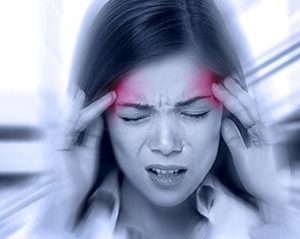- Navigating Your Midlife Crisis: Embracing New Possibilities
- City Raccoons Showing Signs of Domestication
- Mapping the Exposome: Science Broadens Focus to Environmental Disease Triggers
- One Week Less on Social Media Linked to Better Mental Health
- Your Brain Changes in Stages as You Age, Study Finds
- Some Suicide Victims Show No Typical Warning Signs, Study Finds
- ByHeart Formula Faces Lawsuits After Babies Sickened With Botulism
- Switch to Vegan Diet Could Cut Your Greenhouse Gas Emissions in Half
- Regular Bedtime Does Wonders for Blood Pressure
- Dining Alone Could Mean Worse Nutrition for Seniors
One in 3 Women With Migraines Say Attacks Occur During Periods

Among U.S. women with migraine, a third say the attacks tend to coincide with their periods, a new survey finds.
Migraines that occur during menstruation are often frequent and severe, but only about one in five respondents said they used medications aimed at preventing the headaches.
“If you have migraines related to your menstrual cycle, discuss this with your gynecologist or neurologist. There are treatments that can help and if the first treatment tried does not work, do not give up,” said study lead author Dr. Jessica Ailani. She’s professor of clinical neurology at Georgetown University School of Medicine.
The new study was funded by Pfizer, which makes a migraine medication. The findings are slated to be presented Tuesday at the annual meeting of the American Academy of Neurology, in Denver.
Ailani and her colleagues looked at data collected from adult women with migraine as part of the 2021 U.S. National Health and Wellness Survey.
They found that a third of the women said their migraines often occurred during their periods. In more than half of these cases (52.5%), the women were premenopausal.
Migraines occurred frequently during menstrual periods — an average of 8.4 headache days per month — and they were often severe, with just over 56% of women ranking their severity as moderate-to–severe on a standard scale.
Many women attempted to treat the attacks as they occurred, using over-the-counter products (about 42%) or prescription meds (about 49%), the study found.
Only about 21% of women used drugs that are aimed at preventing migraines, Ailani’s group noted.
“In my opinion, this is because preventive therapy is a long-term commitment by both a woman and her clinician to improving the disease process,” she said in a Georgetown news release. “Migraine is a lifelong brain disease without a cure, and the goal of preventive therapy is to reduce disease burden and improve quality of life. Unfortunately, newer disease-specific treatments are costly, so generic older treatments are often used and come with greater side effects.”
According to Ailani, too many women with migraine simply soldier through the pain and never consult a headache specialist.
“As a headache specialist in the U.S., I know I can do better for women in my clinic, but what can be done for the millions of women who don’t get into a headache clinic? That is our true next step,” she said.
Because these findings are to be presented at a medical meeting, they should be considered preliminary until published in a peer-reviewed journal.
More information
Find out more about menstrual migraines at the Cleveland Clinic.
SOURCE: Georgetown University School of Medicine, news release, April 12, 2024
Source: HealthDay
Copyright © 2025 HealthDay. All rights reserved.










